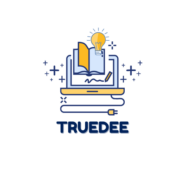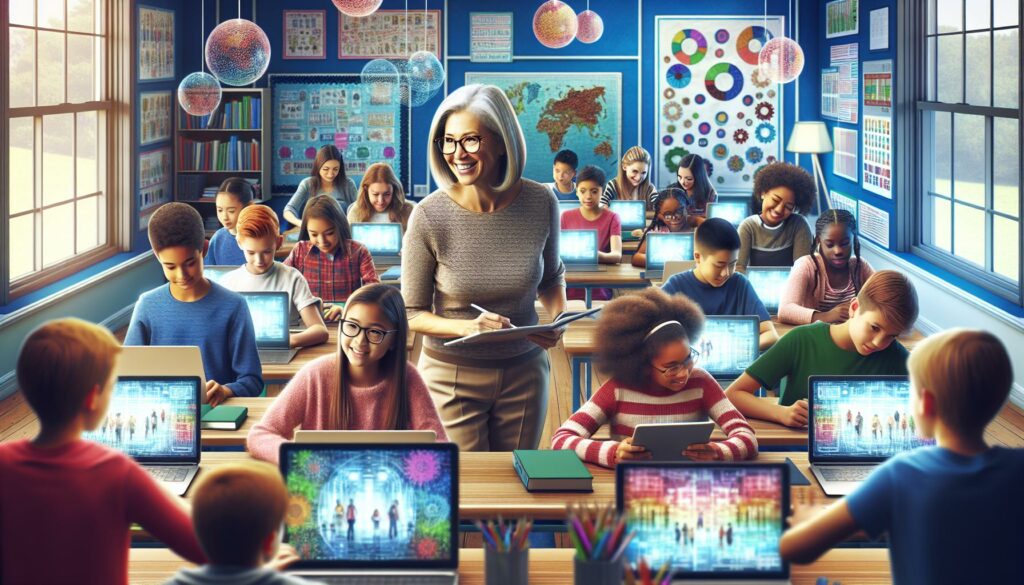In today’s digital age, K-12 education technology companies are transforming the way students learn and teachers instruct. With the rise of online learning platforms and interactive tools, these companies are bridging the gap between traditional education and innovative tech solutions. As a result, classrooms are becoming more engaging and adaptable to the needs of each student. I’ve seen firsthand how these technologies are reshaping education, making it more accessible and personalized. From learning management systems to gamified learning experiences, the options are endless. In this article, I’ll explore the key players in the K-12 edtech landscape and how they’re driving change in our education system.
- Transformative Role of EdTech: K-12 education technology companies are revolutionizing teaching and learning through innovative tools that enhance student engagement and personalize education.
- Diverse Solutions Offered: The sector includes various solutions like Learning Management Systems (LMS), interactive learning tools, assessment solutions, and collaboration platforms that cater to different educational needs.
- Key Players: Established companies like Canvas and Schoology alongside innovative startups like ClassDojo and Flipgrid are driving change, providing both foundational tools and cutting-edge solutions in education.
- Impact on Educators: Technology supports educators by simplifying administrative tasks and offering data-driven insights for personalized instruction, improving overall teaching effectiveness.
- Emerging Trends: Future trends in K-12 education technology include the integration of artificial intelligence for personalized learning and the expansion of online learning platforms that increase accessibility and flexibility for students.
- Personalized Learning Experience: Technologies such as Khan Academy and gamified platforms like Kahoot! enable tailored learning paths that foster student engagement and growth according to individual learning styles.
Overview Of K-12 Education Technology Companies
K-12 education technology companies focus on enhancing the learning experience for students and improving teaching methods. These companies create a range of tools, platforms, and resources tailored for teachers and students. This sector includes software providers, hardware manufacturers, and content developers.
Key areas of focus include:
- Learning Management Systems (LMS): Companies like Canvas and Schoology provide platforms for course management, assignment tracking, and student assessments.
- Interactive Learning Tools: Platforms such as Nearpod and Kahoot! offer engaging content delivery methods that promote student participation and collaboration.
- Assessment Solutions: Companies like Illuminate Education and NWEA deliver data-driven assessment tools that help educators measure student progress and adapt instruction accordingly.
- Supplemental Educational Resources: Organizations like Khan Academy and IXL provide extensive databases of learning materials, driving personalized education opportunities.
- Collaboration and Communication Tools: Platforms such as Google Classroom and Microsoft Teams facilitate communication between teachers, students, and parents, enhancing the overall educational experience.
The collective purpose of these K-12 education technology companies centers on making education more accessible, engaging, and tailored to individual learning needs. Their innovations provide valuable resources that support teachers and empower students to achieve their full potential. The evolving landscape continues to shape the future of education.
Key Players In The Industry
K-12 education technology companies showcase an impressive variety of tools and resources aimed at transforming classroom experiences. Established organizations and emerging startups both play vital roles in this evolving landscape.
Established Companies
Many established companies dominate the K-12 education technology arena. Companies like Canvas and Schoology provide robust Learning Management Systems (LMS), facilitating seamless course management and student engagement. Nearpod and Kahoot! offer interactive learning experiences that boost student participation through gamified assessments and multimedia content. Assessment solutions from Illuminate Education and NWEA help educators track student progress and tailor interventions effectively. Additionally, supplemental resources like Khan Academy and IXL engage students with personalized learning paths. Collaboration tools such as Google Classroom and Microsoft Teams enable streamlined communication among students and educators, enhancing teamwork and project-based learning.
Emerging Startups
Innovative emerging startups contribute fresh ideas and solutions to the K-12 education technology space. For example, Edmodo focuses on social learning, connecting educators, students, and parents in a virtual community. ClassDojo enhances classroom management through real-time feedback and communication between teachers and families. Other notable startups include DreamBox Learning, which personalizes math education using adaptive algorithms, and Flipgrid, fostering student voice through short video discussions. These companies are redefining traditional educational models, offering unique products that address specific challenges and foster engagement.
Innovative Technologies Shaping K-12 Education
K-12 education technology companies leverage innovative tools and platforms to enhance learning experiences and teaching methodologies. Key technologies transforming the classroom today include Learning Management Systems (LMS) and classroom collaboration tools.
Learning Management Systems
Learning Management Systems streamline educational administration and enhance the learning experience. Established platforms like Canvas and Schoology provide user-friendly interfaces for managing course content, assessments, and student progress. These LMS enable educators to deliver personalized instruction and track individual growth over time. With features such as grade books, discussion boards, and multimedia integration, they create a dynamic environment that supports various learning styles. Newer entrants like Edmodo and ClassDojo focus on integrating social elements into learning, fostering communication between students, teachers, and parents.
Classroom Collaboration Tools
Classroom collaboration tools facilitate real-time communication and teamwork among students and educators. Google Classroom and Microsoft Teams allow seamless sharing of resources, assignments, and feedback, creating a cohesive digital workspace. Interactive platforms like Nearpod and Kahoot! enhance engagement through gamified learning experiences and collaborative quizzes. These technologies encourage participation and motivation, making lessons more interactive and enjoyable. By promoting peer interaction and teacher support, collaboration tools play a significant role in building a connected learning community.
Impact On Teaching And Learning
K-12 education technology companies significantly shape teaching and learning dynamics, focusing on student engagement and educator support through innovative solutions.
Enhancing Student Engagement
Engaging students can be challenging, but technology does it effectively. Platforms like Nearpod and Kahoot! utilize gamification and interactivity to make lessons captivating. I’ve observed that students actively participate in lessons, collaborating in real-time with their peers. The use of multimedia elements, such as videos and interactive quizzes, caters to diverse learning styles, promoting deeper understanding.
Personalized learning paths, available through software like Khan Academy and IXL, allow students to progress at their own pace. I’ve seen students thrive when they tackle areas where they excel while receiving additional support in weaker subjects. This tailored approach boosts confidence and fosters a love for learning.
Supporting Educators’ Needs
Educators also benefit greatly from these technological advances. Learning Management Systems, such as Canvas and Schoology, streamline administrative tasks, enabling teachers to focus more on instruction. I recognize that these platforms simplify grade tracking, assignment distribution, and communication with students and parents.
Assessment tools like Illuminate Education and NWEA empower teachers by providing actionable insights into student progress. I find that data analytics help educators identify areas needing intervention, ensuring targeted support. Furthermore, collaboration tools like Google Classroom and Microsoft Teams create an ecosystem where educators share resources and strategies, enhancing teamwork and professional development.
Future Trends In K-12 Education Technology
K-12 education technology is evolving rapidly, with trends expected to shape the future of learning. Key developments include the integration of artificial intelligence and the growth of online learning platforms.
Integration Of Artificial Intelligence
Artificial intelligence (AI) is revolutionizing K-12 education technology by providing personalized learning experiences. AI algorithms analyze student data, creating tailored content that adapts to individual learning paces and styles. Adaptive learning platforms can identify gaps in knowledge, suggesting targeted exercises to bridge those gaps.
AI-powered chatbots enhance student support by providing instant responses to queries, connecting students with resources for immediate assistance. These tools can facilitate communication between teachers and students, improving engagement and fostering a collaborative environment. Additionally, predictive analytics help educators anticipate student needs, allowing proactive rather than reactive intervention strategies.
Growth Of Online Learning Platforms
The growth of online learning platforms significantly impacts K-12 education, making learning more accessible and flexible. Platforms like Khan Academy and IXL allow students to access a wealth of resources anytime, promoting self-directed learning. This availability supports students who may not thrive in traditional classroom settings.
Increased internet accessibility has driven the adoption of these platforms, catering to diverse learners. Gamified experiences on platforms such as Nearpod and Kahoot! motivate students through engaging content, while real-time collaboration features in tools like Google Classroom enhance teamwork. Furthermore, blended learning models combine in-person and online instruction, optimizing educational effectiveness and promoting student agency in their learning journeys.
K-12 education technology companies are truly reshaping the way we think about teaching and learning. With innovative tools and platforms at our disposal, education is becoming more personalized and engaging than ever before. I’ve seen firsthand how these technologies not only enhance student participation but also empower educators to focus on what they do best—teaching.
As we look to the future, the integration of AI and online learning platforms promises to further revolutionize education, making it more accessible and adaptable for all learners. The potential for growth and improvement in this space excites me, and I’m eager to see how these advancements will continue to transform the educational landscape.

